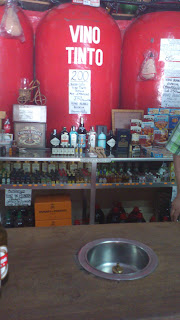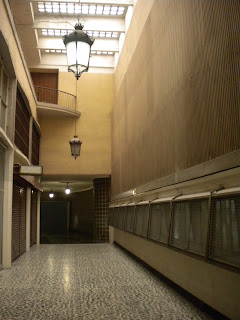In the entrance just can be seen "Wine & beer" and the number "20" of the street. It is known by neighbors as "The Deaf" because of father of the actual bartender who is carrying on with the business.Typical Tavern that remains as it was losts of years ago.
Visiting that tavern is an incredible experience from "Old Madrid" and the environment and people from Cuatro Caminos in that time.
The jars, the taps, the color of the walls and ceilings, tiles, and even toilets remain with no change.
The building in which it is located is interesting in itself in Hernani Street corner to Isturiz being a typical building of the neighborhood from past times. It is one of the first houses builded in Cuatro Caminos, with brick exterior and interior structure of stairs, hallway or patio, with interesting cornices and baseboards.
The building was constructed between 1880 and 1900.
This cultural area, even today, is plenty of locals and typically traditional buildings (less and less every day) that are worth to be known and preserved.
For more information about the architecture of the area:
"Architecture of Madrid". Volume 2. "Ensanches". 'COAM Foundation (school Arquitectos de Madrid). 2003.
The data sheet is available on the College website: http://212.145.146.10/biblioteca/fondos/ingra/index.htm
Pictures & Text: Álvaro Rey




















































